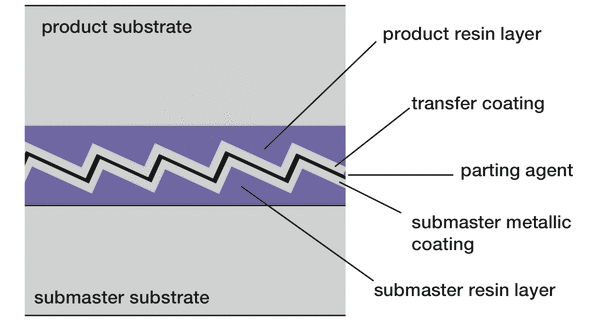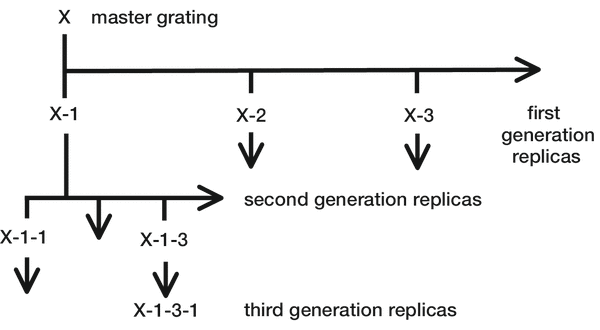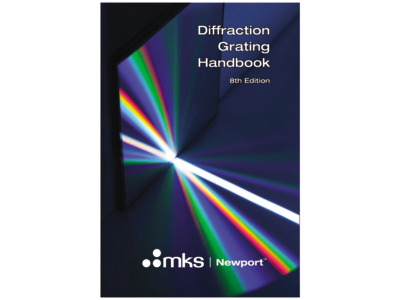Most commercially-available surface-relief gratings are made using a casting process, which faithfully reproduces the three-dimension nature of the grating surface. It is for this reason that photographic replication techniques are not generally sufficient.
The casting process for the production of a replicated diffraction grating is a series of sequential steps:
Submaster selection. The replication process starts with the selection of a suitable submaster grating that has the desired specifications (groove frequency, blaze angle, size, etc.). [A submaster grating is a grating replicated from a master, or from another submaster, but is itself used not as a final optical product but as a mold for the replication of product gratings; for this reason, it is not strictly required that a submaster grating meet all of the performance specifications of the product grating (e.g., it need not have a suitably reflective coating).]
Application of parting agent. A parting agent is applied to the surface of the submaster grating. The parting agent serves no optical purpose and should have no deleterious optical effects but aids in the separation of the delicate submaster and product grating surfaces. Since the replicated optical surface is intended to match that of the submaster as closely as possible, the parting agent must be very thin and conformal to the surface of the submaster.
Application of transfer coating. After the parting agent is applied, a reflective coating (usually aluminum) is applied to the surface of the submaster. This coating will form the optical surface of the product grating upon separation. To obtain an optical quality coating, this step is performed in a vacuum deposition chamber. [Since this coating is applied to the submaster, but transfers to the product grating upon separation, it is called a transfer coating.] Typical transfer coating thicknesses are about one micron.
Cementing. A substrate is then cemented with a layer of resin to the grooved surface of the master grating; this layer can vary in thickness, but it is usually tens of microns thick. It is the resin that holds the groove profile and replicates it from the submaster to the product; the transfer coating is much too thin for this purpose. The “sandwich” formed by the substrate and submaster cemented together is shown in Figure 5-1.
Since the resin is in the liquid state when it is applied to the submaster, it must harden sufficiently to ensure that it can maintain the groove profile faithfully when the product grating is separated from the submaster. This hardening, or curing, is usually accomplished by a room-temperature cure period (lasting from hours to days) or by heating the resin to accelerate the curing, though gratings can also be replicated using a UV-curable resin.
Separation. After the resin is fully cured, the groove profile is faithfully replicated in the resin when the submaster and product are separated. The parting agent serves as the weak interface and allows the separation to take place between the submaster coating and the transfer metallic coating. The groove profile on the product is the inverse of the groove profile on the submaster; if this profile is not symmetric with respect to this inversion, the efficiency characteristics of the product grating will generally differ from those of the submaster grating. In such cases, an additional replication must be done to invert the inverted profile, resulting in a profile identical to that of the original submaster. However, for certain types of gratings, inversion of the groove increases efficiency significantly.
 Over 8,000 products in-stock! & FREE 2-Day shipping on all web orders!* Learn More FREE T-Shirt with orders $250+ Details
Over 8,000 products in-stock! & FREE 2-Day shipping on all web orders!* Learn More FREE T-Shirt with orders $250+ Details



 Ultra-High Velocity
Ultra-High Velocity